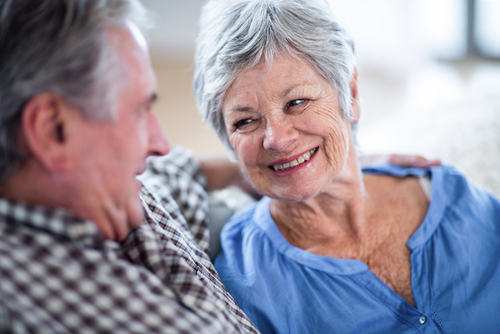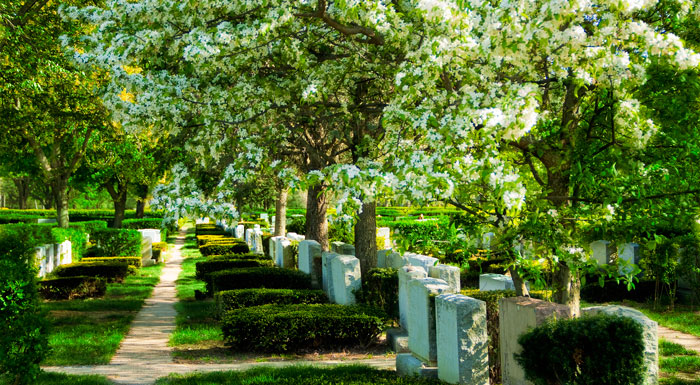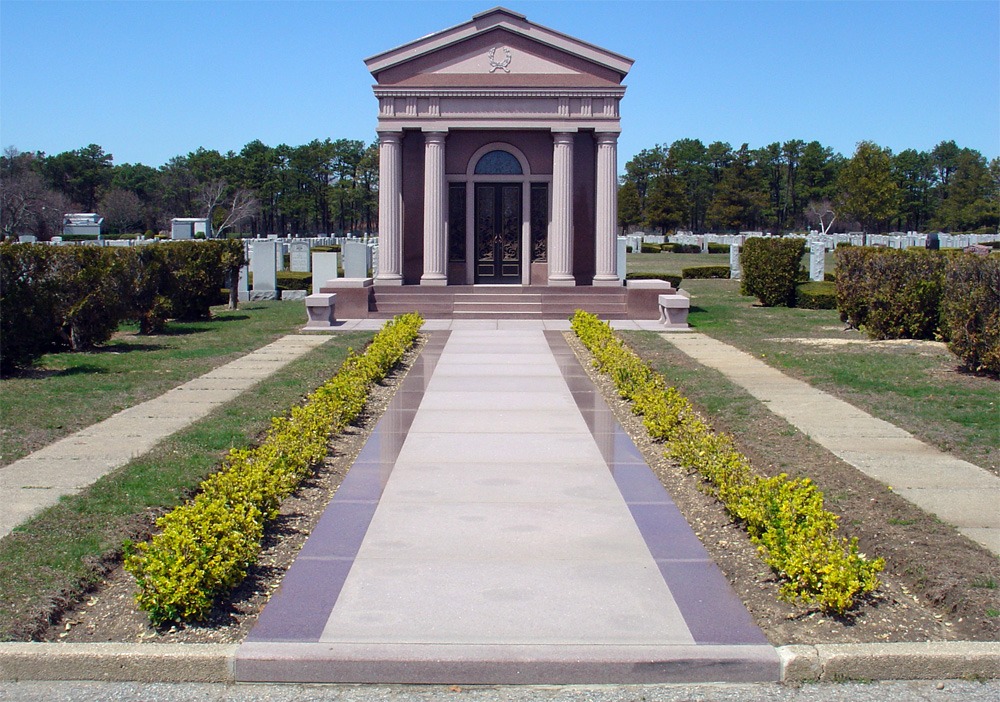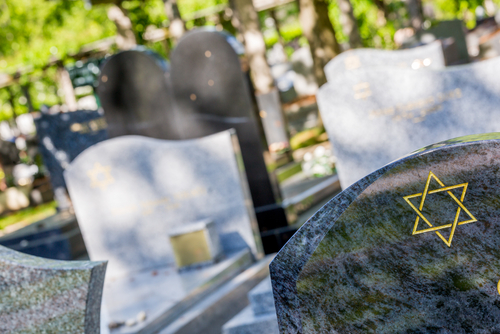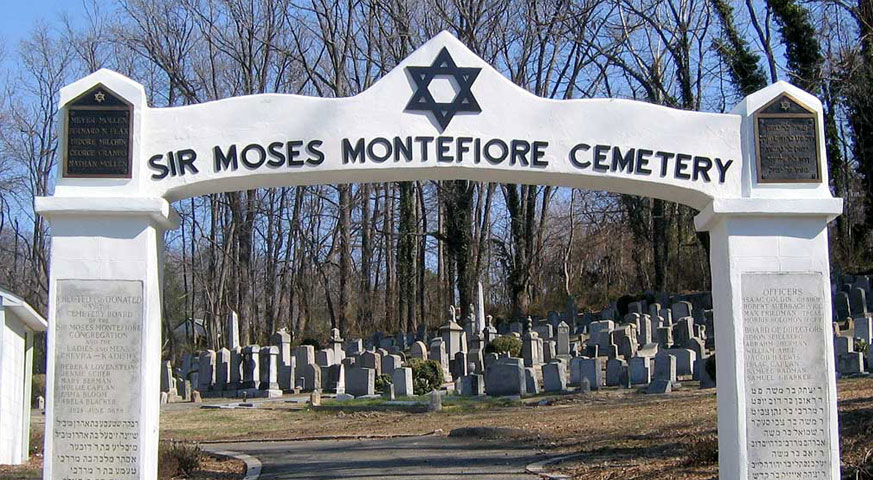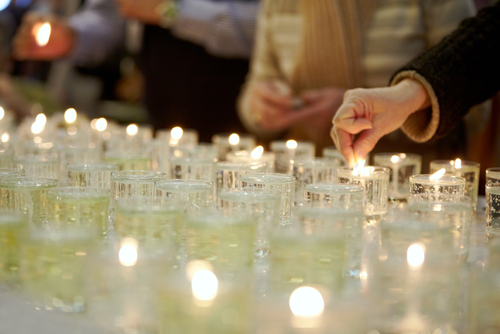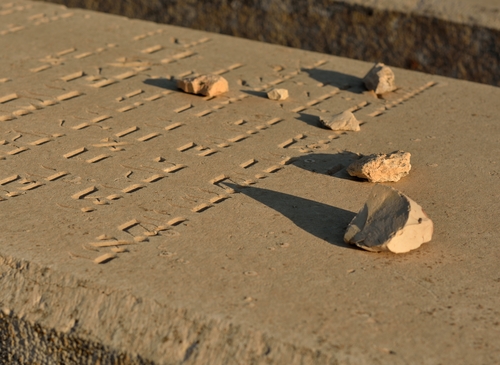
Month by month, we explore the rich and complex Jewish traditions surrounding death, mourning, and funerals. Judaism is one of the world’s most ancient and revered religions, with countless practices and customs surrounding the end of life. Understanding these customs helps friends and family provide meaningful support while honoring the deeply rooted traditions of Jewish communities.
The customs surrounding Jewish funerals are designed to show respect for the deceased, comfort the bereaved, and maintain a connection between family, faith, and community. In a previous post, we discussed a guide to sitting shiva for non-Jews. In this post, we will focus on the role of flowers in Jewish funerals and why they are considered inappropriate, while offering alternatives to express sympathy and support.
Why Aren’t Flowers Appropriate at Jewish Funerals?
For many cultures, sending flowers to a funeral is almost automatic. It’s a traditional gesture meant to convey sympathy and let the bereaved know that you are thinking of them. However, in Jewish tradition, flowers are generally discouraged and sometimes even considered inappropriate for several reasons.
1. Funerals Are Solemn, Not Celebratory
Jewish funerals are solemn and reflective occasions, intended to honor the deceased and allow the family to begin their mourning process. Bright, colorful flowers are often associated with celebration and festivity, which can feel discordant at a Jewish funeral. While it is natural to want to brighten the space or offer beauty, in this context, flowers are seen as potentially disruptive to the grieving process.
Families may view flower deliveries as an unnecessary decoration rather than a meaningful expression of sympathy. The funeral is a time for contemplation and remembrance, not for displays that might suggest celebration.
2. Focus on Permanence and Memory
In Judaism, remembrance is a central theme. One of the most common practices is placing small stones on graves as a permanent marker of memory and respect. Unlike flowers, which are temporary and fade quickly, stones represent enduring remembrance. Sending flowers, with their transient nature, contrasts sharply with this cultural emphasis on permanence and lasting memory.
Placing stones on a loved one’s grave is a symbolic gesture that emphasizes the permanence of memory and the lasting bond between the living and the deceased, making flowers an unnecessary or even counterproductive addition.

The Jewish Funeral Process
To fully understand why flowers are discouraged, it is important to understand the Jewish funeral and mourning process, which differs in several key ways from many other cultural traditions.
1. Rapid Funeral Arrangements
Jewish tradition encourages that funerals occur as soon as possible, often within 24 hours of death. Exceptions may be made to allow mourners to travel, but generally, there is little delay. The emphasis is on promptly honoring the deceased and beginning the mourning period.
2. Preparation of the Body by the Chevra Kadisha
The Chevra Kadisha, a sacred burial society, washes, purifies, and prepares the body according to Jewish law. This process, called taharah, treats the deceased with dignity and respect. Families usually bury their loved ones in simple wooden caskets and avoid embalming. These practices reflect Jewish values of humility, equality, and respect for life and death.
4. Unveiling Ceremony
Months after the burial, many families hold an unveiling ceremony to dedicate the headstone or monument. While this is an opportunity for reflection and remembrance, flowers are still not typically part of the ceremony. The emphasis remains on spiritual commemoration, prayer, and enduring symbols of memory.
Alternative Ways to Express Sympathy
Even though flowers are discouraged, there are many meaningful ways to support Jewish families in mourning. Thoughtful gestures can offer comfort, alleviate practical burdens, and honor the deceased in accordance with tradition.
1. Providing Meals or Care Packages
Food is one of the most practical and appreciated forms of support during shiva. Families often receive visitors throughout the day, and preparing or sending meals ensures they are nourished without added stress. Typical shiva care packages might include:
- Pastries, breads, or baked goods
- Fresh fruit and nuts
- Coffee, tea, and beverages
- Candies or fine chocolates
- Prepared meals with meat, fish, or vegetarian options
- Salads, sides, and condiments
Some friends and community members go further by arranging full catering for the family during shiva, ensuring they have meals for the duration of the mourning period.
2. Visiting During Shiva
Attending shiva is a meaningful way to show support. Visitors are expected to observe customs respectfully, including dressing modestly, offering simple condolences such as “May their memory be a blessing”, and participating in prayers if invited. Avoid asking intrusive questions about the death and refrain from unnecessary distractions.
3. Sending Sympathy Cards or Letters
A heartfelt card or letter can express your condolences in a thoughtful and appropriate way. Writing a personal message allows you to honor the memory of the deceased and provide emotional support for the family without conflicting with religious customs.
4. Charitable Donations (Tzedakah)
Making a donation in memory of the deceased, known as tzedakah, is one of the most meaningful gestures you can make. Contributions to synagogues, educational institutions, hospitals, or social services in the deceased’s name honor their legacy while supporting others in need. Informing the family of the donation is customary and ensures that your gesture is recognized as an act of respect and love.
Respecting Jewish Mourning Customs
When supporting a Jewish family, it is important to recognize that mourning is a structured, multi-stage process. The family may go through intense emotional periods during shiva, the first 30 days after burial, and on the anniversary of the death (yahrzeit). Respecting these customs includes:
- Being mindful of timing and appropriateness of visits
- Providing practical help such as errands, childcare, or meal delivery
- Offering support without imposing personal beliefs or rituals
- Recognizing that the family may prioritize prayer, reflection, and quiet mourning
These practices ensure that your support aligns with Jewish tradition and genuinely helps the family during this challenging time.
Honoring the Deceased
Jewish mourning emphasizes memory and legacy. Beyond immediate gestures, there are many ways to honor the deceased, including:
- Lighting a candle on the yahrzeit (anniversary of death)
- Reciting prayers or attending memorial services
- Visiting the grave and placing a stone to symbolize remembrance
- Supporting charitable causes that were meaningful to the deceased
- Creating lasting memorials such as headstones or monuments that reflect faith and legacy
By participating in these practices, friends and family demonstrate respect, support, and an enduring connection to those who have passed away.
Conclusion
Jewish funerals and mourning customs are steeped in tradition, emphasizing respect, solemnity, and lasting remembrance. While sending flowers is not appropriate, there are numerous meaningful ways to support grieving families, including meals, care packages, shiva visits, sympathy cards, and charitable donations. Each gesture, when aligned with Jewish customs, conveys compassion, respect, and care.
At Fox Memorials, our mission is to create extraordinary Jewish monuments and headstones that honor the lives and faith of your loved ones. For decades, we have worked with Long Island’s Jewish community to craft memorials that serve as lasting tributes. Through careful attention to tradition and a commitment to quality, we help families navigate the mourning process while honoring the memory of those they have lost.
Providing guidance, support, and beautiful, faith-centered memorials is the cornerstone of our work. From Jewish double monuments to custom headstones, Fox Memorials ensures that each tribute reflects the life, legacy, and faith of your loved ones.




